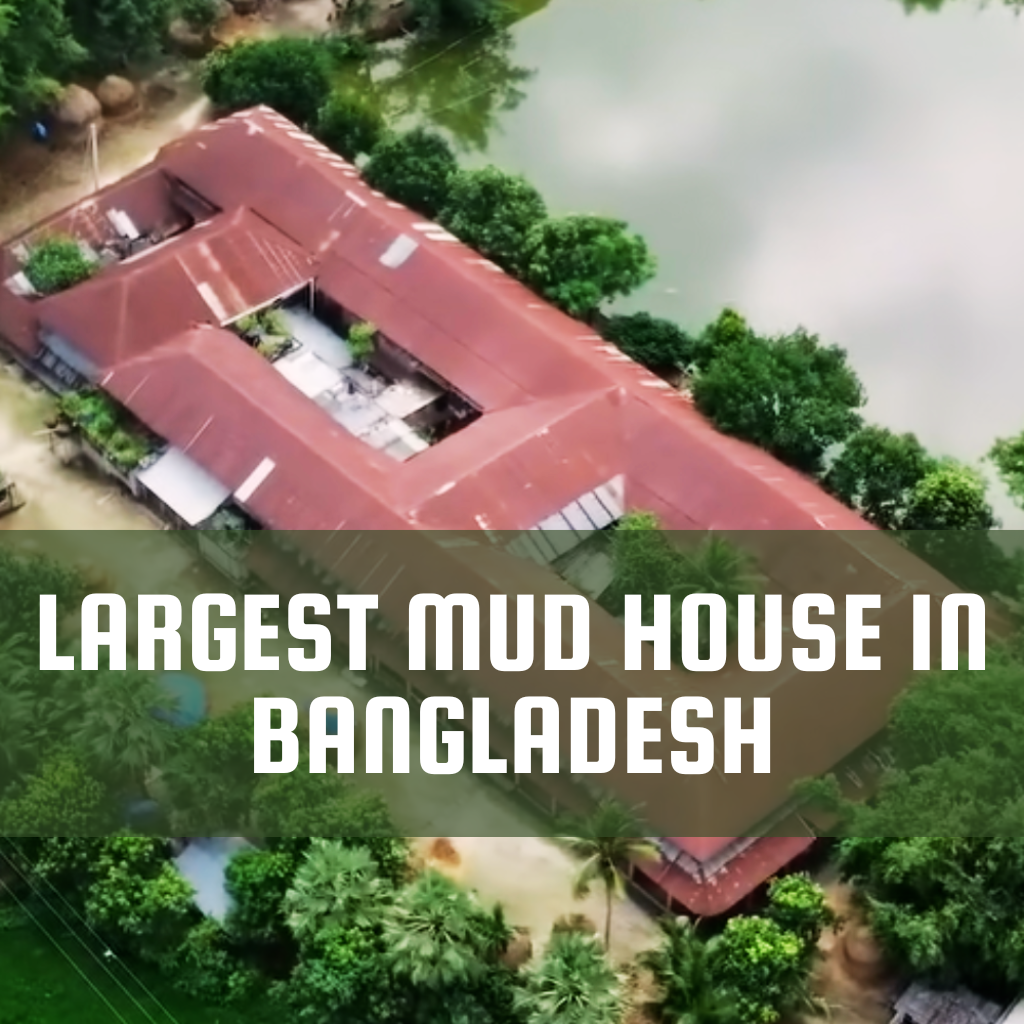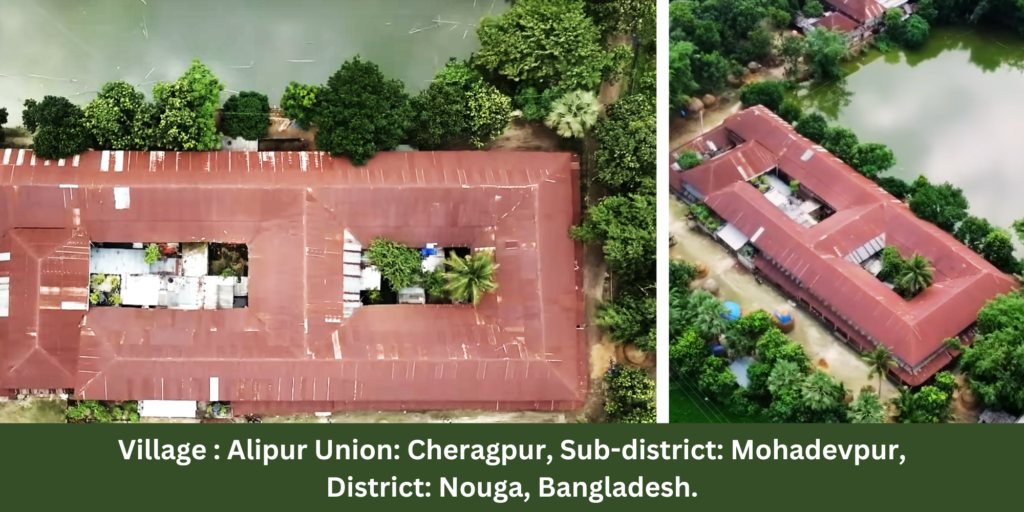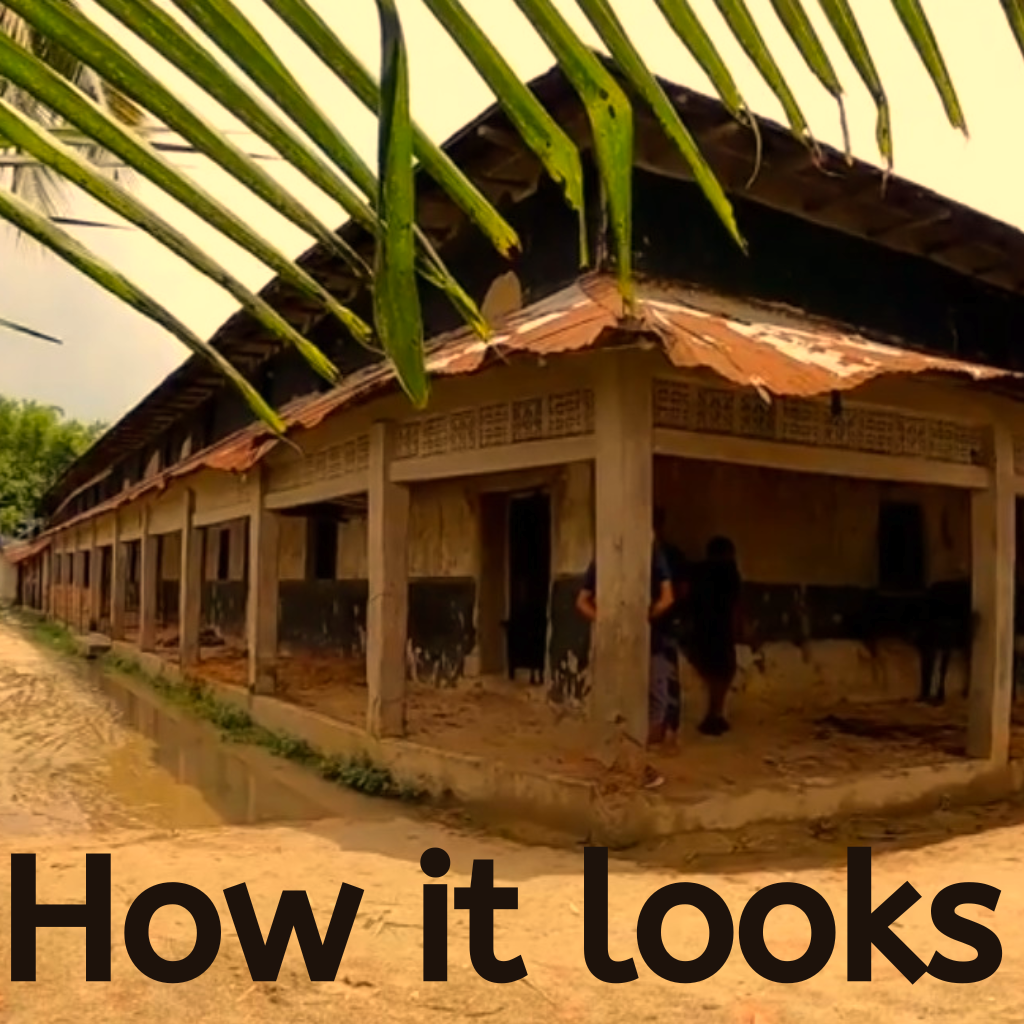A mud house is a traditional Bengali house type. But apart from all the mud houses, the largest mud house in Bangladesh has been built. Traditional village homes are generally made with mud and clay, and the house size is small, with four to five rooms or a maximum of ten to fifteen rooms. But very recently, a house built in Nouga, a district of Bangladesh, broke all records by constructing 108 rooms, which is a rare construction using mud and clay.
Table of Contents
Location of the Largest Mud House in Bangladesh
The house is located in the village of Alipur in Cheragpur Union, within the sub-district of Mohadevpur in Nouga district of Bangladesh. It is situated 11 km southeast of Sub-District Sadar.
About the Largest Mud House in Bangladesh
Thirty-seven years ago, two brothers from the village of Alipur, Somsher Ali Mondol and Taher Ali Mondol, built this incredible house. They wanted to fulfill the need to house their large family in a single building. This concept essentially led them to build the largest mud house. However, nowadays, only 50 to 60 people live in this house because many family members are abroad or in town for career purposes. The house contains 96 large rooms and 12 small rooms to meet their needs. An interesting fact is that it takes 4-5 minutes to walk around the entire house.
Architecture Review of the Largest Mud House in Bangladesh
The house is 300 feet by length (100 meters) and 100 feet by width (33 meters). Two large ponds were dug to supply the soil and mud for the house construction. The soil is prepared by combining dry rice grains and water to make clay. The wall thickness is around 20–30 inches to support the two-story structure. Strong timber frames were also used to build the ground-floor roof, which is the first-floor level. These timber frames were used to construct the second-story pitched roof. The house required 200 bundles of tin (steel sheets) to cover the roof. This is a very large roof in terms of Bangladeshi mud house standards.
The two large ponds, created by digging soil for the house, have become a natural landscape with many valuable trees of different kinds. They have become a natural relaxation space for the occupants. Two courtyards were introduced in the two parts of the house in the center, allowing the house to be well-served by natural ventilation.
Accessibility
The circulation of the house is quite good in the native context. There are 11 entrance doors around the house, providing fluent accessibility.
Cultural Significance of the Largest Mud House in Bangladesh
This mud house is not just a building; it is a testimony to the tradition and history of Bangladesh, particularly in the countryside. The traditional construction materials, including mud, clay, and timber, reflect the appropriate usage in construction inherited from the past. The house perfectly represents the home traditions of Bangladesh, where people live in joint families, and all members share one home. It is indeed a lucky house to witness the joys of family togetherness. This house depicts what makes Bangladeshi village life special—the singular focus on family life in houses like these.
Community and Social Impact
The construction of this mud house had a significant impact on the local community. It has become a point of pride for the residents of Alipur and the surrounding areas. The house has also attracted attention from various parts of the country, bringing visitors and boosting local tourism. People come to see the house and explore the village. The Mondol brothers’ vision and determination serve as an inspiration, demonstrating that with innovation and effort, it is possible to create something extraordinary even with limited resources.
The layout of the house, with its large courtyards and multiple entrances, is a revealation of the history and culture of Bangladesh, as well as a means to foster community spirit. The mud house of the Mondol brothers is more than just a house to live. It is a symbol of unity and strength and an icon of sustainable architecture. It reminds people of the significance of retaining traditional methods of construction in the modern time. The pride felt by the people of Alipur in this house is well-deserved, as it stands as their collective pride in the spirit of heritage and innovation.
Environmental Considerations
Concerning the environmental aspect of the largest mud house, it is important to take note of its eco-friendly nature. Mud and clay construction is environmentally friendly because these materials are naturally sourced and need less processing compared to the other materials. This process helps to keep the house cool in summer and warm in winter, and no artificial heating and cooling is required.
The creation of two large ponds during construction not only provided the soil and mud for the building but also enriched the surrounding atmosphere. These ponds now provide a healthy living for local wildlife, enriching the biodiversity and also providing a natural habitat for many species of plants and animals. This is an example of sustainable living, where humans and nature coexist and strive together.
Final Thoughts
The house comprises 108 rooms and is the largest mud houses in Bangladesh. The construction of mud houses is not only unique but also exquisite, strengthening the cultural value of the country and being environmentally friendly. This house was built by Somsher Ali Mondol and Taher Ali Mondol, and it is more than just a home for a large family; it is the pride of the community and the epitome of their strength. The construction process, character, and eco-friendly nature of the house make it a rare architectural gem in a rural area.



